Artfully Small Examples of the Real Thing
by Maxine Carter-Lome
Salesman samples are scaled-down versions of real commercial products used to demonstrate their features and functionality to retailers or potential customers. Made to 1:6 scale or 1:8 scale when compared to the actual product, machine, or piece of equipment, these highly detailed replicas were typically labeled with a product name and company logo, and often came in customized travel cases that could be used to enhance the display, or hold several versions of the same item in a range of colors, styles, or finishes. They are also often confused with demonstration models, patent models, children’s toys, and doll furniture.

See Before You Buy
After the Civil War and into the early decades of the 20th century, industrial manufacturers of everything from farm equipment to household appliances and furniture put thousands of itinerant salesmen on the road to introduce their company’s products to country store owners, homeowners, dealers, and farmers in more rural parts of the country, now easily accessible through rail travel.
Being able to put a product in a potential buyer’s hands is always a powerful sales tool but at that time, this was not an easy nor cost-effective way for a salesman to handle traveling from town to town selling large-size products. Salesman samples allowed the salesman to create interest in the newest products, demonstrate full functionality, and then take orders for products that could be shipped at a later date.
In the February 1921 issue of Printer’s Ink Monthly, C.P. Russell described the practice of using “miniature models” as sales aids. “The salesmen were suspicious in the beginning,” Russell wrote. “They were not sure they wanted to carry a ‘toy’ around with them. They felt it might be silly. One by one they were prevailed upon to give it a try. They let the model do the heavy work of introducing, demonstrating, and convincing, reserving themselves for the really important work of closing the order and getting it signed.”
Salesman samples were made for a wide range of products by a number of manufacturing companies in the late 19th century and early 20th centuries. Stoves and washing machines, working typewriters that can fit in the palm of a hand, shoes, a working grist mill, Flexible Flyer sleds, a brace and bit drill set, furniture, furnaces, stoves, ice boxes, and toilets are just a few of the new industrial goods that got downsized. Farm equipment was another natural candidate for such samples, with excellent examples made of working plows, reapers, hay loaders, and other farm machinery. Today, many of these miniature replicas are highly collectible across a range of collector categories.
Salesman samples generally fall into one of two categories: those that work and those that do not. Working samples, more common before 1920, can help date a piece. Usually, the more a vintage salesman sample remains true to the original product and its working features, the higher its value to collectors.
While these are fun items to collect, buyers beware. Salesman samples are often confused with a doll or children’s toy because of their size, but the difference and value are all in the details.
Unlike toy versions of household items aimed at children, many salesman’s samples were highly detailed with working parts so they could be used to demonstrate the full functionality of the product, and will almost always have the name of the product or company logo on it, whereas a toy would not. Many original salesman samples also came with brochures containing marketing text pointing out important details of the product and presentation. The more functional, detailed, identifiable and complete the sample, the more valuable it is to collectors.
Another area of confusion is miniature furniture samples versus doll furniture. Children’s toy furniture was typically made smaller than salesman samples and usually not as well made, whereas furniture samples were the real thing created in the same way but in a reduced size – they used all the same woods and hardware. Samples were made to look as good or better than the actual piece of furniture because people didn’t change their furniture as often as they do today; they bought quality pieces that would last. It is this quality and craftsmanship that collectors look for in making the distinction between the two and setting value.
Because exact replicas with detail and full functionality made these samples expensive to produce, companies only made a small quantity of each. Rarity, as with all collector categories, also plays into value.
Miniature stove replicas are perhaps the most popular and visible example of what people generally think of as a salesman sample, although collectors in the know, know how to distinguish between a toy stove, display model, patent model, reproduction stove, and an authentic antique salesman sample, a common challenge across this collectibles segment.
In the first few decades of the 20th century, exact small replicas of gas and electric stoves and ranges from leading manufacturers of the time were produced to make it easy for traveling sales representatives to showcase their goods without hauling actual size products across the country. These salesman samples allowed the salesman to point out important design features and the stove’s functionality as they tried to convince the shopkeeper or leery early housewife of the marvels of gas or electricity over hot and labor-intensive wood-fired ovens.
These salesman samples are often confused with the small electric toy kitchen ranges that were made to look similar to the product but were fully functional. Demonstration models designed for shop display (miniature in size as compared to the original but sometimes weighing as much as 50 pounds) were used to pique consumer interest and generate leads for the salesmen.
Companies such as Charter Oak (St. Louis, Missouri), Majestic, Buck’s, and Detroit Stove Works all made salesman sample replicas out of commercially available stoves, and are some of the identifying brands to look for on the market. These stoves were typically made out of cast iron and enameled, and came with functioning parts, detailed marketing materials, and accessories. While an embossed brand name on the product generally helps to identify it as a salesman sample and not a toy, that is not always the case with some intentional reproduction samples.
Down on the Farm
Given the size of the equipment their traveling salesmen were selling, farm equipment manufacturers also saw the value and sense in salesman samples. The salesman could hop on a train and travel from town to town with these highly-detailed samples of plows, reapers, and tillers, and hold demonstrations to show how their product worked. The farmer would then place their order, usually out of a catalog, and never actually see the machine in action until it showed up.
In this segment of the market salesman samples are often confused with promotional marketing toys made by such manufacturers of farm equipment as John Deere, to connect their brand with the future farmers of America. Detail and functionality are two clues that help differentiate one from the other.
While working salesman samples were created for the traveling salesman to drum up business as they roamed the country on the rails, manufacturers also saw value in using miniature examples of their products for shop owners to display, as thank you gifts to customers for their business, and as a novel way to advertise their products. These salesman sample versions typically didn’t run or work, although they served a practical purpose, and were seen as popular brand-building promotional marketing items. Some companies had exacting replicas made of their products as a way to showcase the evolution of their products. These companies and their iconic products that revolutionized life in the first half of the 20th century live on in these samples even if the business does not.
Salesman samples were still being used into the 1940s and 1950s but the rise in automotive travel after WWII made it easier for traveling salesmen to travel with actual size examples of all but the largest of products in their trunk or back seat. What once had value as a sales tool is today valued by collectors for their craftsmanship, and the next big thing these miniatures represented in their day.

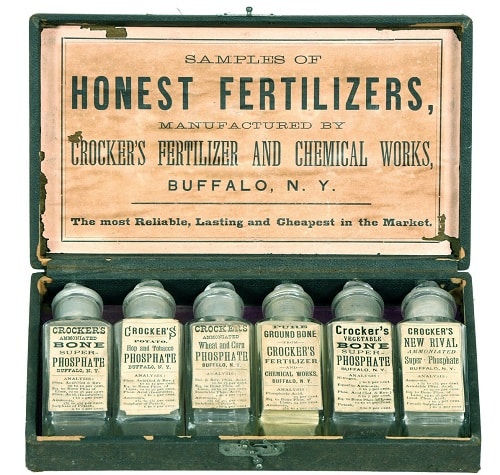

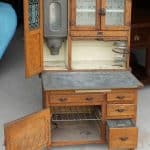




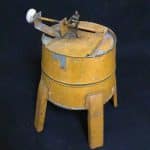
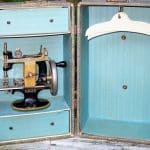
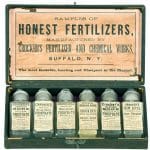



Related posts: